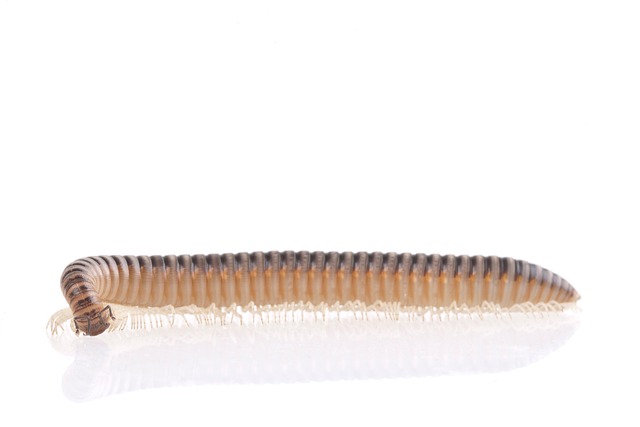Centipedes prefer dark, damp spaces with high humidity, so eco-friendly centipede solutions focus on reducing moisture through ventilation and dehumidification, sealing entry points, and removing organic debris. Maintaining a dry lawn and trimming vegetation discourages them naturally. Strategies include regular cleaning, proper ventilation, planting natural repellents like mint, lemongrass, lavender, and marigolds, and sealing gaps in doors and windows. While plant-based oils may offer temporary relief, their effectiveness varies; proper drainage and reduced moisture levels around the property are also crucial for deterring centipedes naturally.
“Discover expert tips to keep centipedes at bay! Understanding their unique behavior and habitat is key to an effective centipede control strategy. Explore our comprehensive guide on eco-friendly practices, from natural deterrents to creating a centipede-unfriendly environment. Learn how to reduce attractants and minimize these pesky creatures’ presence without harmful chemicals. Implement these simple yet powerful eco-friendly centipede solutions for a more peaceful living space.”
Understanding Centipede Behavior and Habitat
Centipedes are nocturnal creatures that thrive in dark, damp environments, making your space an attractive haven if it offers these conditions. Understanding their behavior is key to effective prevention. These arthropods seek out moisture and organic matter as food sources, often hiding in cracks, under objects, or within lush vegetation. They prefer warm temperatures and are particularly drawn to spaces with high humidity levels.
Adopting eco-friendly centipede solutions involves creating an environment that discourages their presence. This can be achieved by reducing moisture levels through proper ventilation and dehumidification, especially in areas like basements or bathrooms. Regularly cleaning and sealing entry points, such as cracks and gaps around doors or windows, will make your space less inviting. Removing piles of organic debris, maintaining a mowed lawn, and trimming vegetation close to your home’s foundation can significantly reduce centipede attractants, offering a more natural and chemical-free approach to pest control.
Eco-Friendly Practices to Deter Centipedes
When it comes to repelling centipedes, opting for eco-friendly practices is a wise choice. Instead of relying on chemical-laden pest control products, consider natural solutions that promote a healthier environment. Maintaining a clean and dry space is key; centipedes are attracted to moist environments, so regular cleaning and proper ventilation can significantly deter them.
Planting certain herbs and flowers like mint, lemongrass, lavender, and marigolds around your home or garden can also act as natural repellents. These plants contain compounds that mask the scent trails centipedes use to navigate, making your space less appealing to them. Additionally, ensuring proper sealing of entries and cracks can prevent these pests from finding their way indoors, promoting a more peaceful coexistence with nature.
Natural Repellents and Their Efficacy
Many people turn to natural repellents as an eco-friendly centipede solution, believing they are safer and more harmless than synthetic chemicals. While some natural methods can be effective, it’s important to understand their limitations. Plant-based oils like citronella, peppermint, and lavender are known to deter centipedes due to their strong scents. However, these repellents often provide only temporary relief and may need frequent reapplication, especially after rainfall or high humidity.
The effectiveness of natural repellents also varies based on the specific species of centipede and the size of your space. Some essential oils are more potent than others, and their scent potency can be affected by environmental factors like sunlight and temperature. Despite these considerations, using eco-friendly centipede solutions is a popular choice for those seeking a more natural approach to pest control.
Creating a Centipede-Unfriendly Environment
Creating an environment that discourages centipedes is a key step in keeping them at bay. Opt for eco-friendly centipede solutions by maintaining a clean and clutter-free space, especially in areas where these pests tend to congregate, like dark corners and damp spots. Regularly cleaning and sealing entry points such as gaps in doors, windows, and foundations can prevent centipedes from finding their way indoors.
Consider using natural repellents like citrus scents or peppermint oil around your home’s perimeter. Planting certain herbs like mint, lemongrass, or lavender can also act as a natural barrier. Additionally, ensuring proper drainage and reducing moisture levels in and around your property makes it less appealing to centipedes, as they are drawn to humid environments.
By understanding centipede behavior, implementing eco-friendly practices, leveraging natural repellents, and creating an inhospitable environment, you can effectively reduce these pests in your space. Adopting these strategies not only minimizes the use of harsh chemicals but also promotes a healthier, more sustainable living environment. Embrace these simple yet powerful eco-friendly centipede solutions to reclaim your spaces.
